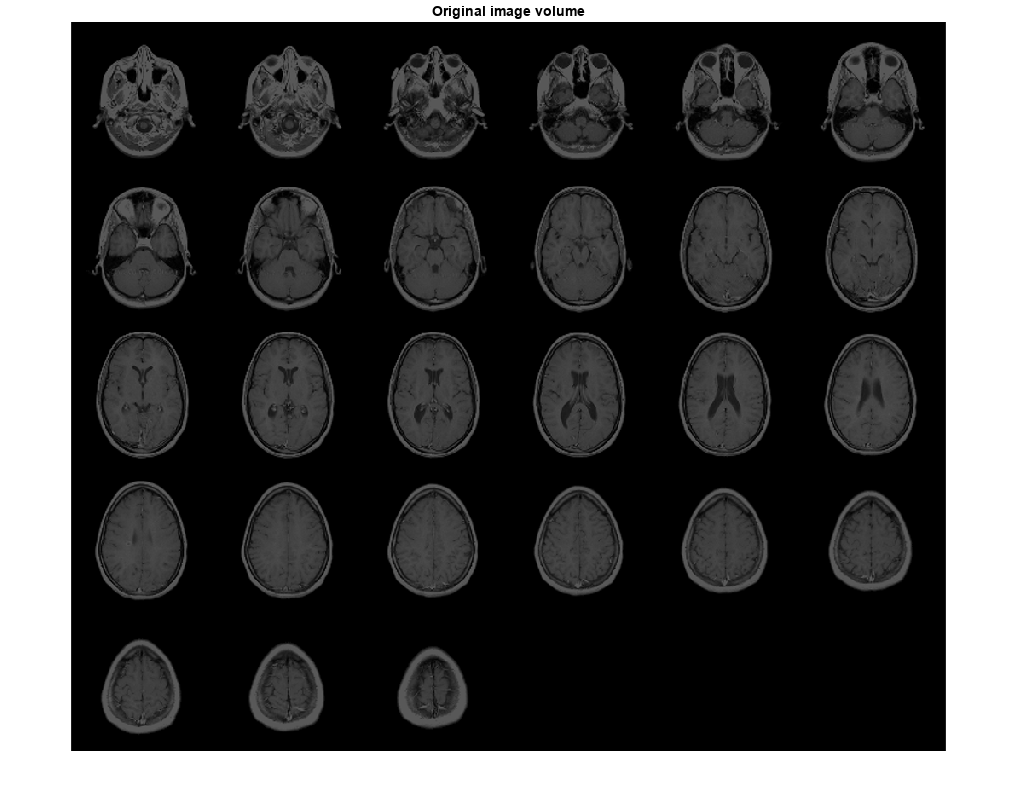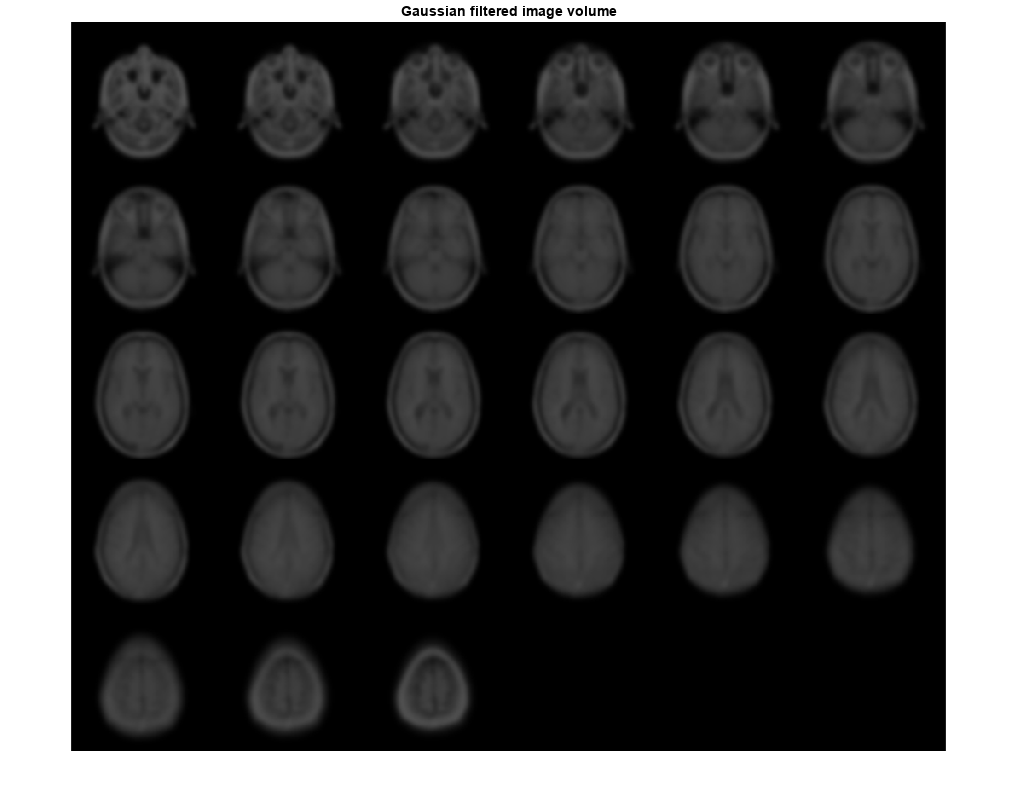imgaussfilt3
3-D Gaussian filtering of 3-D images
Description
B = imgaussfilt3(___,Name,Value)
Examples
Input Arguments
Output Arguments
Tips
If image
AcontainsInfs orNaNs, then the behavior ofimgaussfilt3for frequency domain filtering is undefined. This can happen if you set theFilterDomainargument to"frequency"or if you set it to"auto"andimgaussfilt3uses frequency domain filtering. To restrict the propagation ofInfs andNaNs in the output in a manner similar toimfilter, consider setting theFilterDomainargument to"spatial".If you set the
FilterDomainargument to"auto", thenimgaussfilt3uses an internal heuristic to determine whether spatial or frequency domain filtering is faster. This heuristic is machine-dependent and may vary for different configurations. For optimal performance, try both options,"spatial"and"frequency", to determine the best filtering domain for your image and kernel size.If you do not specify the
Paddingargument, thenimgaussfilt3uses"replicate"padding by default, which is different from the default used byimfilter.


